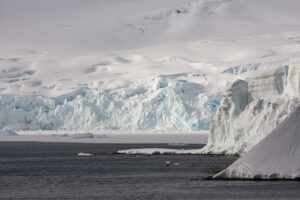Is society ending due to climate change? The internet says “definitely yes,” and “definitely no,” and every shade of “maybe.”
One group of researchers wanted to peel back a few layers. Climate change does destroy some cultures — but why? And, more pressingly, why do others survive these traumatic fluctuations?
Austria’s Complexity Science Hub performed the peer-reviewed study, sourcing an ambitious database of significant moments in human history. The group pulled data on 150 calamities throughout time periods and regions from Seshat, which aims to catalog “human cultural evolution since the Neolithic.”
The key insight is bad news for many of us around the world: Cohesion is the main ingredient in social survivability, the researchers found.
Rome’s declining plague survival
“Inequality is one of history’s greatest villains,” Daniel Hoyer, a co-author of the study and a historian who studies complex systems, told PopSci. “It really leads to and is at the heart of a lot of other issues.”
The team draws the argument that we need a strong capacity for teamwork to meet the huge challenges climate change can cause.
For instance, high volcanic activity in the early centuries AD helped cool temperatures, which led to the epidemic waves that crippled the Roman Empire. The Republic survived the first one, 165 AD’s Antonine Plague of smallpox, through community resilience — even though it lasted for a generation and was far deadlier than COVID-19, according to the Smithsonian.
Emperor Marcus Aurelius reinforced cities and towns that the pestilence cleared out, inviting migrants to work the fields and even promoting the sons of freed slaves to replace felled aristocrats.
But the third century’s Plague of Cyprian tore into a Roman Empire in flux. Civil wars and outsider invasions roiled it, and a seismic shift to Christianity under Emperor Constantine loomed. Rome survived again, but the Plague of Justinian in the sixth century proved too much.
View this post on Instagram
This likely genetic precursor to the Black Death laid the empire low with death rates soaring to 25-40% in Constantinople, according to The Collector. The Western Roman Empire had collapsed two centuries earlier, and invaders had pillaged Rome itself twice. Emperor Justinian had involved his army in reclaiming lands, but when the population rotted from the inside out, attackers closed in.
Too many Maya, not enough water
General consensus agrees that other factors did contribute to these pandemics, like increasing global trade. So what about other societies that suffered from more direct climatic shifts like droughts, famines, and floods?
The Maya had heavily populated the interior uplands of the Yucatan peninsula by around 750 AD. But seven successive droughts then occurred, and they had virtually disappeared from the area by 1000 AD (when the civilization itself effectively collapsed).
The Maya kept growing and populating, though, throughout the first five major dry spells. Why did they succumb to the last two?
Looks like they were overpopulated, evidence suggests. According to the Harvard Gazette, dense cities of 60,000-100,000 people sucked up water sourced unsustainably from wetlands and forests. The Mayans’ agriculture techniques made the problem worse, and the cyclical droughts finally overcame their ability to survive.

Ti’kal, now a UNESCO World Heritage Site, was a Mayan epicenter from 200-900 AD. Photo: Daniel Mennerich via Flickr
Poor design, the report suggests, made their choked cities unlivable under ecological pressure.
“You need to have social cohesion, you need to have that level of cooperation, to do things that scale — to make reforms, to make adaptations,” Hoyer, the Complexity Science Hub co-author, told PopSci. “Whether that’s divesting from fossil fuels or changing the way that food systems work.”






